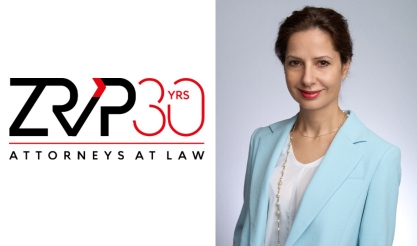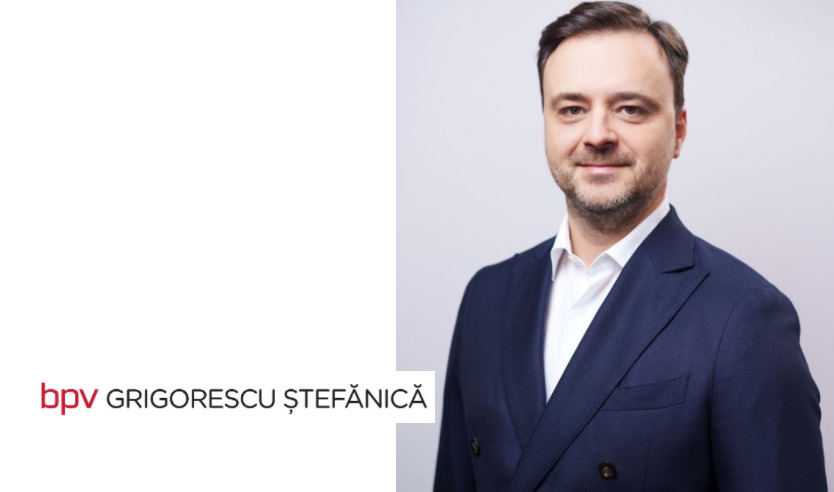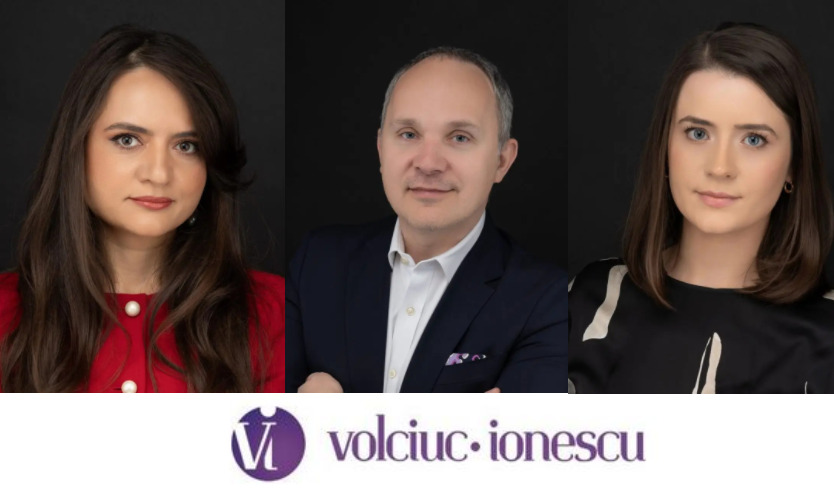
M&A market in 2025, as seen by ZRVP’s lawyers: steady volumes, diverse deal types, international buyers more active than local ones, and mounting compliance pressure; SPVs and earn-outs are no longer innovations but operational standards, while real-estate hybrids are showing up more often | Anca Danilescu (Senior Partner): “I’m not giving up my optimism and I don’t rule out sustained growth in deal volume and value, with megadeal potential in energy, IT, logistics and healthcare”
11 Octombrie 2025 R. T., A. I.
When it comes to defining “success” in a transaction, Anca Danilescu’s position is both clear-cut and nuanced. “I don’t believe that for a lawyer assisting clients in M&A transactions success can be redefined,” she says, stressing that the aim remains unchanged: negotiating terms that best reflect the client’s interests.

|
Law firm Zamfirescu Racoți Vasile & Partners (ZRVP) has built an M&A practice that banks on consistency, hands-on partner involvement, and an execution discipline radically oriented toward the client’s interest.Files are led directly by partners, with blended teams (corporate, competition, real estate, energy, regulatory) able to manage the full deal lifecycle.The firm’s philosophy privileges “making the right call” over “closing at any cost”: success may also mean recommending not to proceed. The practice serves both strategic investors (medium- to long-term integration) and private equity funds (value optimisation and exit), finely tailoring documentation and strategies. Experience in deals with a dominant real-estate component and in renewable-energy projects gives ZRVP a clear competitive edge on complex mandates. And the emphasis on training polyvalent lawyers—technically strong and equally capable of strategic judgement on risks and benefits—delivers clarity in decision-making, speed in execution, and long-term protection of clients’ interests.
High-stakes stability: a market that rewards consistency, not fireworks
In a year when the global economy swung between caution and momentum, Zamfirescu Racoți Vasile & Partners’ M&A practice navigated without sharp swings. “Despite global and local politico-economic challenges and uncertainties, our M&A practice has been balanced and stable, maintaining a level similar to 2024,” says ZRVP Senior Partner Anca Danilescu. That balance, she notes, is not a given; it reflects a market that hasn’t rewarded the spectacular but has favoured steady execution: “We have not seen either sharp declines or spectacular increases versus the previous period. We recorded a constant volume of projects in which we assisted clients, which I would characterise, in the current context, as a real success.”
Against this backdrop of stability, deal typologies remain diverse, without a mass migration to any single direction. Danilescu points out that ZRVP has advised this year on strategic acquisitions, consolidation transactions and mergers of equals—without adding opportunistic takeovers to the list. Their absence should not be read as a rule for the year, but rather as a snapshot of the moment. “We do not rule out seeing such transactions in the near future,” she adds, recalling that “from our past experience, in periods considered to be crises, the number of these projects increases significantly.” In other words, opportunism hasn’t vanished from M&A; it re-emerges cyclically as economic pressure mounts.
Shifts in investment appetite have been, for ZRVP, more subtle than dramatic. “Our personal ‘statistics’ have remained constant: we have had foreign clients more active than local ones, particularly in renewable energy,” Danilescu notes. This predominance of foreign capital, especially in the green space, confirms a recurring theme of recent years: renewables attract disciplined capital, familiar with EU regulations and compliance demands—a detail that grows in importance as approval filters multiply.
When it comes to defining “success” in a transaction, Danilescu is both forthright and nuanced. “I don’t believe that for a lawyer assisting clients in M&A transactions success can be redefined,” she says, emphasising that the objective remains the same: negotiating terms that best reflect the client’s interests. “Naturally, each party involved—together with its advisers—sets out hoping the project will be completed and that the agreed commercial and legal terms will, to the greatest extent possible, reflect its interests.” From the vantage point of a client-centric lawyer, however, achieving that aim sometimes requires a different kind of courage: the courage to recommend stepping back. “For a lawyer dedicated to the client, successful assistance in a transaction does not always mean completing the deal—or, more precisely, not completing it at any cost,” she says, adding nuance: “Surprisingly, a successful project can be not only one where you are present at Closing, but also one where the client, competently warned about the advantages and disadvantages of the deal, decides in time not to move forward, thus avoiding the waste of resources and unjustified risks relative to potential benefits.”
--------------------------------------------------
Read also
.jpeg) → NNDKP, a firm recognized by international directories as “one of the heavyweights on the market” in the local mergers and acquisitions segment, explains why strategic investors dominate the scene and which sectors emerge as this year’s surprises | A conversation with partners Gabriela Cacerea and Adriana Gaspar on the current architecture of M&A and today’s key challenges
→ NNDKP, a firm recognized by international directories as “one of the heavyweights on the market” in the local mergers and acquisitions segment, explains why strategic investors dominate the scene and which sectors emerge as this year’s surprises | A conversation with partners Gabriela Cacerea and Adriana Gaspar on the current architecture of M&A and today’s key challenges
---------------------------------------------------
Read also
.jpeg) → NNDKP, a firm recognized by international directories as “one of the heavyweights on the market” in the local mergers and acquisitions segment, explains why strategic investors dominate the scene and which sectors emerge as this year’s surprises | A conversation with partners Gabriela Cacerea and Adriana Gaspar on the current architecture of M&A and today’s key challenges
→ NNDKP, a firm recognized by international directories as “one of the heavyweights on the market” in the local mergers and acquisitions segment, explains why strategic investors dominate the scene and which sectors emerge as this year’s surprises | A conversation with partners Gabriela Cacerea and Adriana Gaspar on the current architecture of M&A and today’s key challenges---------------------------------------------------
Compliance changes the game: from elongated Signing-to-Closing to CEISD as a milestone in itself
This philosophy of informed prudence inevitably meets today’s compliance reality. Over the past year, the path from Signing to Closing has become longer, more technical, and studded with mandatory checkpoints. “The proliferation of compliance requirements—especially those concerning foreign direct investment (FDI) screening—has had a major impact on the deal process,” Danilescu underscores. Even if it hasn’t translated into formal “sophistication” of documents (“obtaining the necessary approvals is usually treated in contracts as conditions precedent to be satisfied by the buyer alone or, as the case may be, together with the seller, between Signing and Closing”), the practical effect is undeniable: “the increase in compliance obligations has significantly changed deal timelines and added an extra dose of uncertainty as to completion.”
It’s not just time that’s changing, but also investor psychology—especially for those perched between interest and hesitation. “Unfortunately for the M&A market, the tangible effects of the rising number and complexity of compliance requirements risk discouraging investors who are still undecided about investing in Romania or those unwilling to wait longer than initially estimated to complete the deal,” the ZRVP partner warns. In this context, milestones that once seemed intermediate become successes in their own right: “having a transaction authorised within a reasonable time by the Commission for the Examination of Foreign Direct Investments (CEISD) is, these days, a major interim success,” Danilescu notes. In practice, it’s an acknowledgment that M&A has entered an era where compliance management is as strategic as commercial evaluation.
--------------------------------------------------
Read also
 → bpv Grigorescu Ștefănică: strategic transactions and sector consolidations define the M&A market | 2025 brings innovative structures, distressed M&A, and a redefinition of success, in a market where lawyers become the architects of balance between strict regulations and investor interests
→ bpv Grigorescu Ștefănică: strategic transactions and sector consolidations define the M&A market | 2025 brings innovative structures, distressed M&A, and a redefinition of success, in a market where lawyers become the architects of balance between strict regulations and investor interests
---------------------------------------------------
Read also
 → bpv Grigorescu Ștefănică: strategic transactions and sector consolidations define the M&A market | 2025 brings innovative structures, distressed M&A, and a redefinition of success, in a market where lawyers become the architects of balance between strict regulations and investor interests
→ bpv Grigorescu Ștefănică: strategic transactions and sector consolidations define the M&A market | 2025 brings innovative structures, distressed M&A, and a redefinition of success, in a market where lawyers become the architects of balance between strict regulations and investor interests---------------------------------------------------
Where the money goes: green energy, transport, manufacturing and tech; real-estate hybrids
Looking at sector dynamics, 2025 hasn’t delivered spectacular “surprises” for the ZRVP team; rather, it has confirmed earlier trends. “For us, 2025 has not brought many surprises in terms of the most active sectors from an M&A perspective; the trends observed previously have held up,” Danilescu says. Continuity is most visible in the green space: “we continue to benefit from the effervescence of projects in the renewable-energy sector.” At the same time, a “hybrid product,” as she calls it, is moving to the forefront: M&A transactions with a dominant real-estate component—evidence that infrastructure and property assets are increasingly embedded in acquisition logic.
Beyond green energy, Danilescu is betting on transport, manufacturing and, of course, technology. “Generally speaking, I maintain my view that, alongside green energy, transactions in transport (including associated infrastructure) and manufacturing—bolstered by Romania’s entry into Schengen—will carry significant weight on the local M&A market. To these we can naturally add the growing interest in tech companies.” Combined with foreign investors’ appetite, this sectoral map suggests Romania is consolidating its appeal in areas where public policy and private capital pull in the same direction.
Two investor archetypes continue to play by different rules—and demand distinct legal strategies: strategics and private equity funds. “The major difference lies in the motivation of the two investor types,” Danilescu summarises. Strategic investors are companies already active in the target sector or an adjacent one, seeking to secure, develop and diversify their business “over a medium or even long time horizon.” Private equity funds, by contrast, aim to “maximise, in as short a time as possible, the return on capital raised from investors by accelerating the reorganisation of acquired companies, increasing their value, and then selling them.”
That divergence of objectives inevitably shapes deal architecture and documentation. “Different ends naturally call for different approaches, which—seen from the perspective of M&A legal services—influence the way takeover strategies must be designed and the way deal documents are drafted.” In practice, acquisitions by strategic investors are often followed by mergers or reorganisations—sometimes complex—to integrate the target vertically or horizontally; a post-deal choreography less typical of funds, which from day one chart the path to exit.
Beyond stylistic differences, the data confirms that funds are making their presence increasingly felt, without yet dominating the stage. “From a practical perspective, studies available at this point analysing the evolution of Romania’s M&A market indicate that in the first half of this year private-equity activity increased, reaching a 9% share of total transactions, versus 6% in the same period last year. Strategic investors, however, continue to dominate Romania’s M&A market by a clear margin,” Danilescu concludes.
Taken together, the 2025 market picture—as seen from ZRVP’s M&A desks—is one of clear-eyed maturity. The path from intention to closing is longer and more controlled, yet no less attractive for capital prepared to manage compliance risk. Stable project volumes, diverse deal types (with the potential for a cyclical revival of “opportunistic” trades when the context tightens), intensity in renewables, and the strengthening of transport, manufacturing and technology sketch a landscape where success doesn’t necessarily mean “to close,” but “to decide correctly.” And in this equation, the lawyer’s voice—the one that can say, at the right moment, “it’s worth it,” or “not yet”—may be more than ever the difference between merely running a process and protecting long-term interests.
A few years ago, “innovation” in M&A structures—for many market players—meant SPVs or earn-out arrangements. Today, these options have become standard kit. Danilescu puts it plainly: “The creation of project companies and earn-out mechanisms is already a crystallised practice in M&A projects,” a trend visible “regardless of the sector.” In other words, they no longer differentiate; they mark the baseline for transactional sophistication. “No longer, therefore, innovative legal mechanisms,” these structures act as stabilising pivots in a market that prizes contractual predictability.
Where a clear shift is visible is at the intersection of M&A and real estate. “As regards hybrid deals,” Danilescu notes, “we have recently seen, in our practice, a rise in M&A transactions with a dominant real-estate component.”
--------------------------------------------------
Read also
 → Volciuc-Ionescu’s M&A practice is accelerating in a more active market, where multi-layered compliance and sophisticated pricing ̸ structuring mechanisms raise the legal stakes. A transaction is truly successful only if, post-closing, the integration runs smoothly, the expected synergies are actually delivered, and no major issues arise that erode value | Behind every completed mandate lies a carefully balanced mix of expertise, collaboration and resilience
→ Volciuc-Ionescu’s M&A practice is accelerating in a more active market, where multi-layered compliance and sophisticated pricing ̸ structuring mechanisms raise the legal stakes. A transaction is truly successful only if, post-closing, the integration runs smoothly, the expected synergies are actually delivered, and no major issues arise that erode value | Behind every completed mandate lies a carefully balanced mix of expertise, collaboration and resilience
---------------------------------------------------
Read also
 → Volciuc-Ionescu’s M&A practice is accelerating in a more active market, where multi-layered compliance and sophisticated pricing ̸ structuring mechanisms raise the legal stakes. A transaction is truly successful only if, post-closing, the integration runs smoothly, the expected synergies are actually delivered, and no major issues arise that erode value | Behind every completed mandate lies a carefully balanced mix of expertise, collaboration and resilience
→ Volciuc-Ionescu’s M&A practice is accelerating in a more active market, where multi-layered compliance and sophisticated pricing ̸ structuring mechanisms raise the legal stakes. A transaction is truly successful only if, post-closing, the integration runs smoothly, the expected synergies are actually delivered, and no major issues arise that erode value | Behind every completed mandate lies a carefully balanced mix of expertise, collaboration and resilience---------------------------------------------------
ZRVP’s DNA: hands-on partners, blended teams and training polyvalent lawyers
At ZRVP, beyond recognised expertise, one of the key ingredients that cultivates client loyalty is the delivery model. “The direct and constant involvement of partners in providing legal assistance—beyond mere project coordination—is a defining feature of our practice,” says Anca Danilescu. And as transactions grow more technical, the working model adapts accordingly: “the complexity of many of the M&A transactions we handle requires mixed teams that can cover very diverse practice areas under the common umbrella of M&A expertise.” In this framework, Danilescu coordinates the M&A practice with the active involvement of fellow partners Ioana Racoți, Elena Iacob and Cătălin Micu, alongside “a team of associate lawyers with significant experience both in corporate and in sectors frequently engaged in M&A projects: competition law, real estate, energy, regulatory, etc.” The result: a formula that blends vertical depth (specialisations) with a transversal bridge (M&A) enabling swift responses to multiple compliance demands.
This interdisciplinary weave is also the chief challenge for newer generations. In a landscape where “niche specialisation” often seems like the rule, Danilescu shifts the emphasis to polyvalence: “one of the challenges facing lawyers working on M&A projects is to know and study several areas in parallel, so as to have an integrated approach and a comprehensive view of the transactions they are involved in.” Equally essential is commercial compass: “Another challenge is understanding the client’s business and clearly identifying their interests,” a prerequisite for “applied legal assistance,” irrespective of the variety of sectors involved.
Asked to compress the traits of a top-tier team into a “top three,” her caution is natural—“There are so many aspects to consider that I find it difficult to pick a top three”—but one pillar is non-negotiable: “Certainly, thorough professional preparation.”
Looking ahead, prudence remains a virtue. The geopolitical and macroeconomic context complicates predictions, making any firm two- to three-year outlook “hazardous.” “Still, considering what we have seen in the first part of this year, I am not abandoning an optimistic stance and I do not rule out sustained growth in deal volume and value, with megadeal potential in energy, IT, logistics and healthcare. It is also foreseeable that AI and digitalisation will fuel M&A niches in technology,” Danilescu concludes.
For a team that bets on partner involvement, interdisciplinarity and rigour, this is not just a forecast but a work plan: strengthening hard skills, practising commercial empathy, and training the reflex of cross-practice collaboration—the very strengths that, at ZRVP, turn complexity into competitive advantage.
| Publicitate pe BizLawyer? |
  |
| Articol 32 / 4610 | Următorul articol |
| Publicitate pe BizLawyer? |
 |

BREAKING NEWS
ESENTIAL
PNSA a asistat Grupul Société Générale în finalizarea vânzării BRD Pensii. Echipa, coordonată de Silviu Stoica (Avocat Asociat) și Florian Nițu (Avocat Asociat Coordonator)
NNDKP, parte din echipa juridică internațională care a asistat Metinvest în achiziția ArcelorMittal Iași
Mușat & Asociații obține o nouă victorie definitivă pentru NUROL într-un proiect strategic de infrastructură rutieră
Apreciată constant de ghidurile juridice internaționale pentru mandatele sofisticate, practica de Capital Markets a CMS România a devenit, prin consistență și profunzime, unul dintre pilonii reputației firmei pe piața locală și un reper important în rețeaua sa regională | De vorbă cu Cristina Reichmann (Partener) despre disciplina pregătirii pentru bursă, finețea aplicării regulilor de piață și forța unei echipe care lucrează articulat, cu roluri clare și obiective aliniate
Record de promovări la Țuca Zbârcea & Asociații: trei noi parteneri și alte 16 numiri interne | Florentin Țuca, Managing Partner: ”Această serie de promovări, una dintre cele mai extinse din istoria noastră, coincide cu aniversarea a 20 de ani de la fondarea firmei, un moment ce reconfirmă valoarea, profesionalismul și dăruirea întregii noastre echipe”
Filip & Company a organizat în parteneriat cu Asociația Studenților în Drept cea de-a zecea ediție a Concursului de negocieri simulate „Teodora Tudose”
MAXIM ̸ Asociații asistă EMSIL TECHTRANS în tranzacția imobiliară încheiată cu METSO pentru o proprietate industrială din Oradea
Kinstellar a consiliat GEA Group, firmă cu operațiuni în peste 150 de țări, cu privire la crearea unui joint venture cu RebelDot, companie de tehnologie din Cluj-Napoca. Echipa care a gestionat proiectul a fost condusă de Rusandra Sandu (Partner) și Mihai Stan (Managing Associate)
Mitel & Asociații dezvoltă o practică de litigii construită în jurul unui nucleu de avocați cu mare experiență, capabilă să ducă la capăt mandate complexe cu impact financiar și reputațional major, într-o piață în care disputele devin tot mai tehnice și mai dure | De vorbă cu Magda Dima (Partener) despre cum se construiește strategia, se evaluează riscurile și se formează generația nouă de litigatori
Echipa de Concurență a RTPR îmbină experiența cu precizia operațională, într-o formulă remarcată în Legal 500 și Chambers | De vorbă cu partenerii Valentin Berea și Roxana Ionescu despre modul de lucru care privilegiază consistența și rigoarea, cu rezultate ce confirmă profesionalismul și anvergura practicii
NNDKP, Popescu & Asociații și ZRVP au cei mai mulți profesioniști listați în Benchmark Litigation - 2025. Ce avocați au intrat în liga „Litigation Stars” și prin ce s-au remarcat firmele aflate în plutonul de forță al practicii
Mușat & Asociații confirmă, în Real Estate, forța unei echipe obișnuite să lucreze sub presiunea timpului și a reglementărilor, menținând proiectele pe un traseu sigur de la due diligence la implementare | De vorbă cu Monia Dobrescu (Partener) despre combinația de rigoare juridică, luciditate în evaluarea riscurilor și creativitate în soluții, într-o periodă plină de provocări
Citeste pe SeeNews Digital Network
-
BizBanker
-
BizLeader
- in curand...
-
SeeNews
in curand...











 RSS
RSS














































